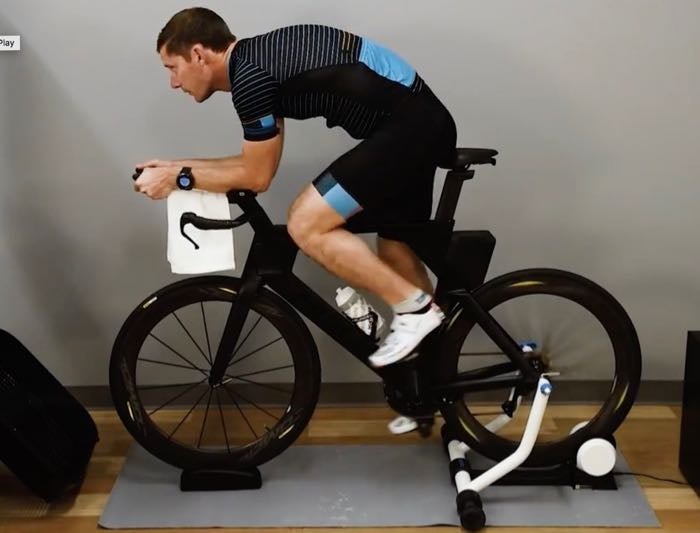One-Hour Workout: Building Bike Breathers

This week’s workout comes from Boulder, Colorado-based coach Alan Couzens. Couzens has a master’s degree in science in exercise physiology from the University of Western Sydney in Australia and works with high-level age-groupers and pros including 2016 70.3 world champion, Tim Reed, and 2016 Ultraman world champion, Iñaki De la Parra.
“Coming from my former job as a full-time sport scientist/physiologist, one of the most frequent questions I receive is ‘What is the best way for me to set my zones without spending a lot of money on lab tests?’” Couzens says. “I offer the following workout as a really useful simple test set that can be repeated on an ongoing basis through the season.”
“This workout moves you through three critical physiological points: the aerobic threshold, the first ventilatory threshold, and the second ventilatory (anaerobic) threshold,” he says.
Couzens recommends doing this bike workout in a controlled setting on a trainer in a cool room with an extra fan. To get the maximum benefit from the session, wear a heart-rate monitor and use a power meter or power-based smart trainer for the most accurate, useful information. Note the power and heart rate averages during each of these points in order to understand your effort zones better.
“As a bonus benefit, pending some horrible gadget malfunction, it helps to get the athlete in tune with some internal markers of intensity that they always have access to,” he says. “In terms of getting to know your own physiology, it’s a great one to include on a regular basis.”
“The focus of the workout is how your breathing changes with increasing effort,” he says. And because this workout is relatively low stress, it can be performed frequently to gauge your fitness and re-establish training zones.
Warm-up
10 minutes very easy spinning with comfortable breathing through the nose
Main Set
3 x 10 minutes (descending 1-3):
10 minutes at just below the limit of nose breathing (i.e. when you start to struggle or hear the air going through your nostrils, back it off just a tad)
10 minutes at a power/intensity that elicits ‘quiet mouth breathing’ (i.e. you need to open mouth but not so intense that you can hear your breathing)
10 minutes at a power/intensity that elicits ‘noisy but controlled’ mouth breathing (i.e. you can hear your breathing but it is at a steady, rhythmic rate—not ‘panting’)
Cool-down
10 minutes easy spin